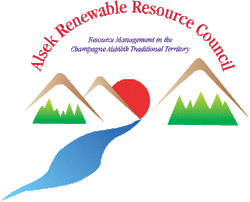Welcome

The Alsek Renewable Resource Council (ARRC) is a voice for local community members in managing our renewable resources, such as fish, wildlife and forests. The ARRC began its work in 1995 after the signing of the Champagne and Aishihik First Nations (CAFN) Final Agreement. The Final Agreement created the ARRC as the “primary instrument for local renewable resources management.”
Renewable Resource Councils (RRCs) are unique to the Yukon Territory and provide strong input into planning and regulation by the territorial, federal and First Nations governments. The ARRC’s jurisdiction is the Champagne Aishihik Traditional Territory (CATT) which includes the communities of Haines Junction, Canyon Creek, Mendenhall, Silver City, Kloo Lake, Aishihik and Klukshu.
Renewable Resource Councils (RRCs) are unique to the Yukon Territory and provide strong input into planning and regulation by the territorial, federal and First Nations governments. The ARRC’s jurisdiction is the Champagne Aishihik Traditional Territory (CATT) which includes the communities of Haines Junction, Canyon Creek, Mendenhall, Silver City, Kloo Lake, Aishihik and Klukshu.
We are hiring!
Kathleen River Lake Trout Survey
|
Current Council Members
|


